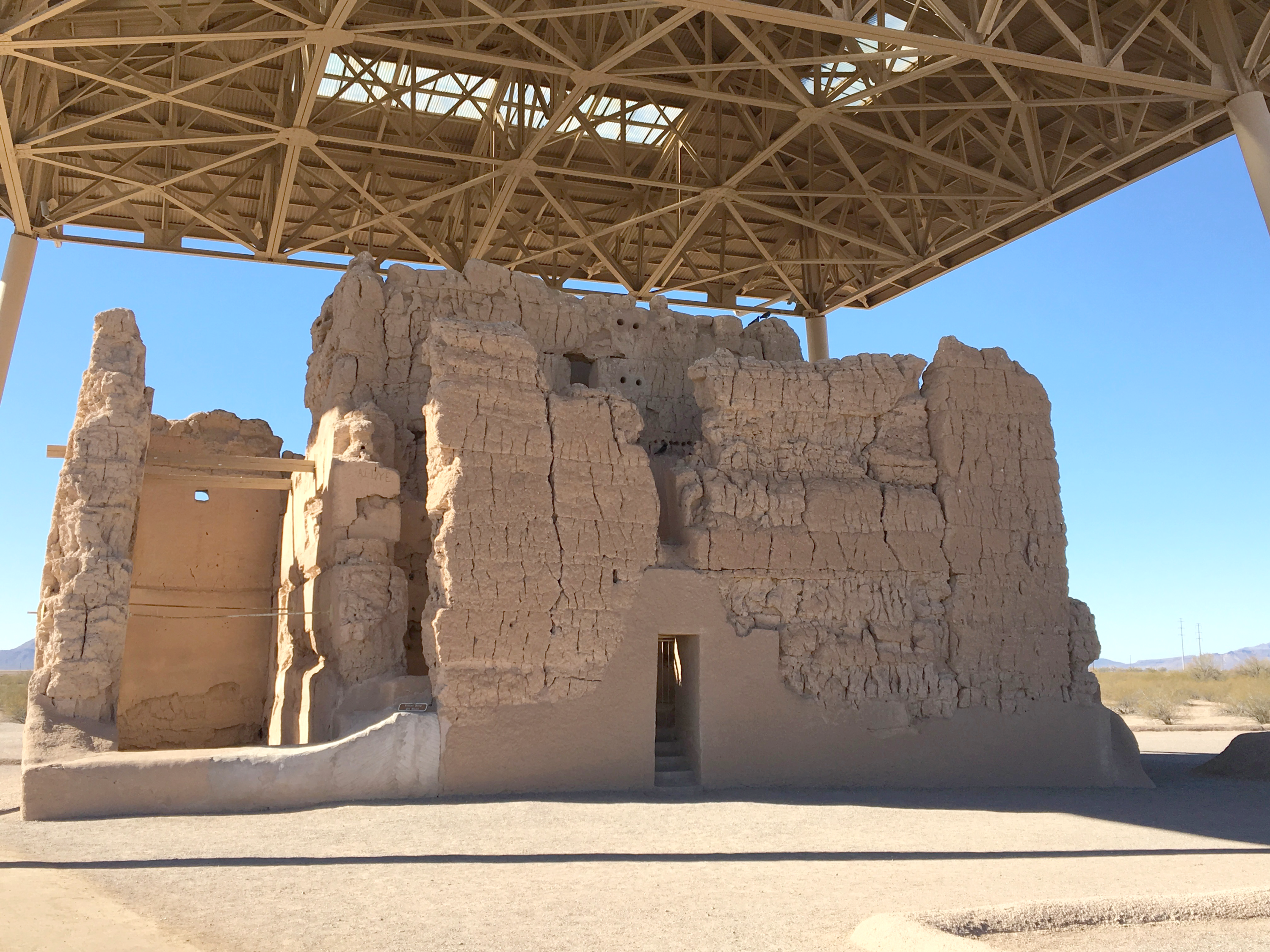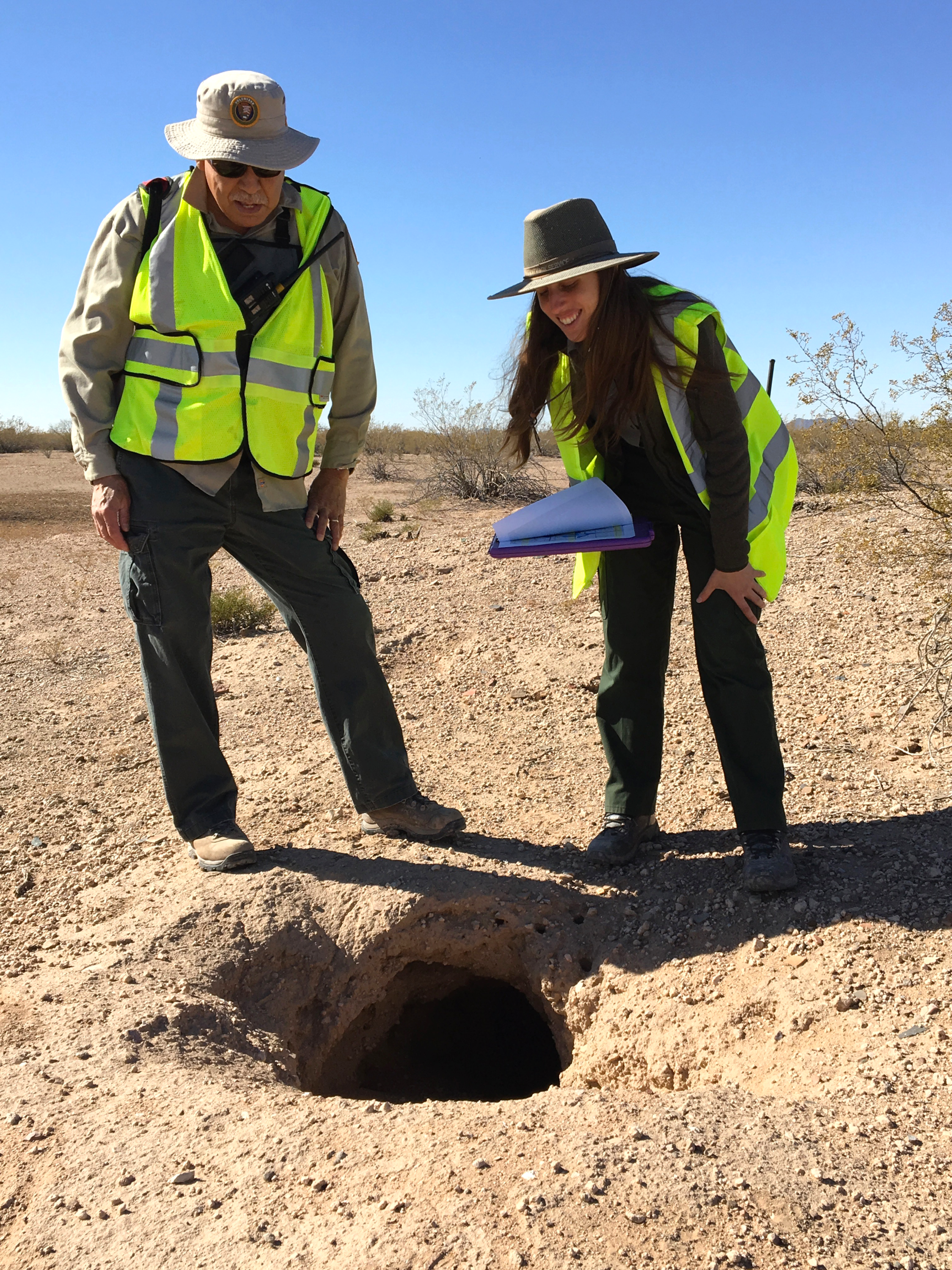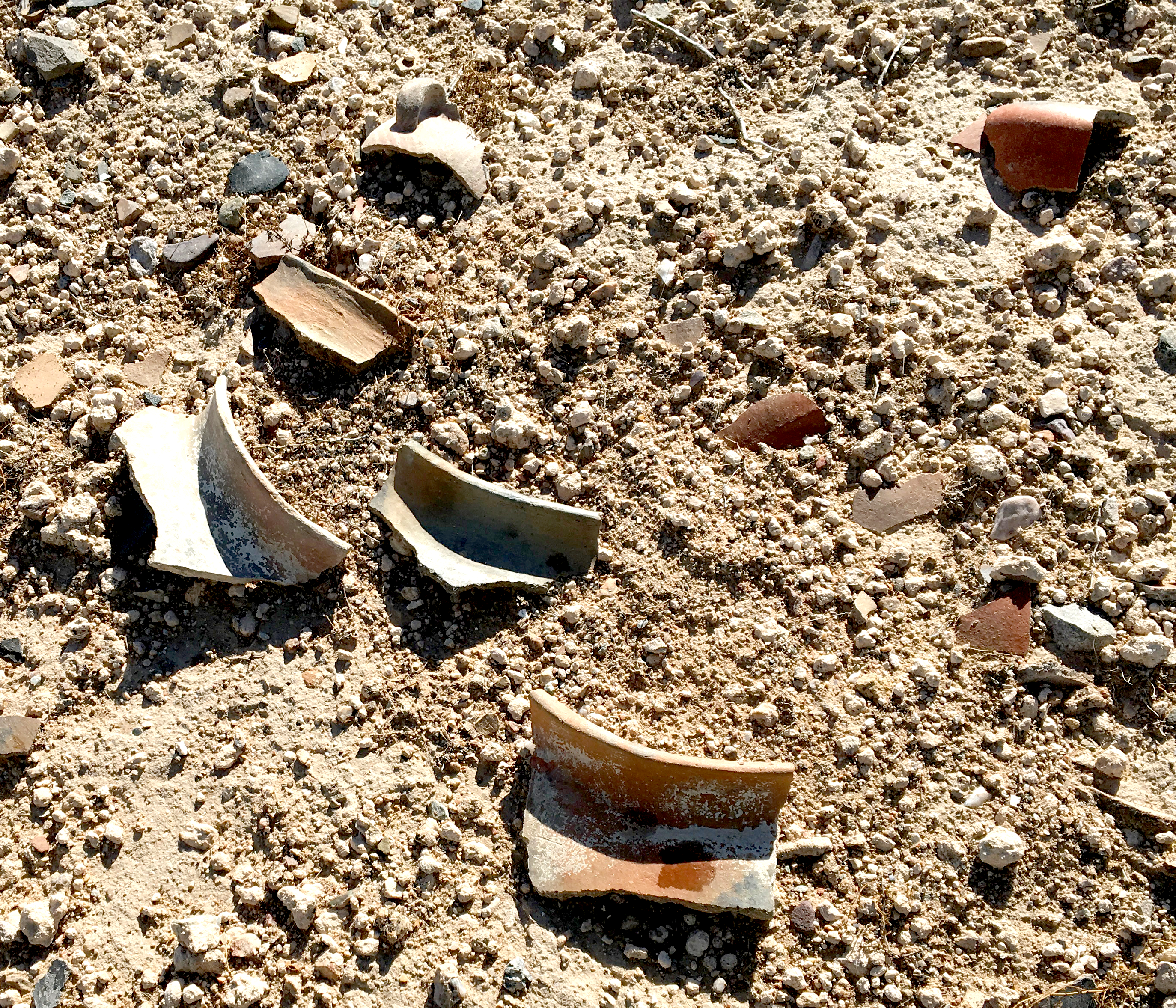Protecting a Long-Vanished Community with IPM
On the outskirts of Coolidge, Arizona, a four-story mystery rises from the desert.

The structure known as Casa Grande
A large rectangular structure, built painstakingly from timber hauled from distant hills and mud mixed on site. Erected around 1325 by the ancient Sonoran Desert people. Abandoned 100 years later for reasons still debated today.
Known variously as Sivan Vah’ki, Casa Grande or the Great House, it is one of the largest prehistoric structures ever discovered in North America. Once the heart of a large and prosperous community that numbered in the thousands, today it’s managed by the National Park Service as the Casa Grande Ruins National Monument and visited by tourists.
Why the Great House was built, what it was used for and why it was abandoned aren’t known. The answers may be found in the artifacts buried all around Casa Grande, in several distinct compounds. One day, descendants of those ancient peoples and archeologists may use those artifacts to solve the mystery of Sivan Vah’ki.
But the artifacts surrounding Casa Grande – the evidence that may one day solve the archeological mystery – is under threat.
Round-tailed ground squirrels burrow in the sensitive sites, attracted to the soft, mounded dirt covering the ancient compounds. Coyotes, foxes and wild dogs burrow after them, unearthing artifacts and disrupting the stratification so important to archeologists trying to understand the past.
The National Park Service, needing a way to manage this pest problem, turned to integrated pest management. IPM practices and principles used across the country to protect communities from pests are now protecting a community that disappeared more than 600 years ago.
IPM Meets Archeology
To help develop a plan to preserve the sensitive sites around the Great House, the National Park Service reached out to experts at the University of Arizona’s College of Architecture, Planning and Landscape Architecture. They in turn contacted the Arizona Pest Management Center in the university’s College of Agriculture and Life Sciences to develop the pest-management portion of the preservation plan.
Shaku Nair, a community IPM assistant in extension, began working with Katherine Shaum, an archeological technician for the Park Service, to document the problem and develop solutions.
“We’re trying to maintain the integrity of the archeological sites,” Shaum explained. “If we can convince these animals to move into areas that are not archeological sites, that’s a success. It’s good to have native animals and wildlife in the park, we’d just prefer they not be in these particular locations.”
So Shaum, Nair and some park volunteers are doing everything they can to be annoying.
“We are not trying chemical management of the rodents,” Nair said. “Instead, we’re trying an integrated approach using a number of tactics including monitoring, trapping, deterrents and botanicals.”

Mike Garcia and Katherine Shaum inspect a burrow
The team scouts the one-mile square location for fresh burrows, and has tested three different botanical products and a solar-powered sonic repellent to see which are most effective at getting the critters to move along. So far, spraying the botanical products directly into burrows hasn’t proven persistent enough and the most success has come with using a sachet containing balsam fir and other essential oils, which still emits scent even a month after being deployed.
“Nothing like this has ever been tried here,” Shaum said. “We have a lot of limitations at the park, so finding something that works within those limitations is challenging.”
The park has limited staff and resources, for one. It has a small core group of volunteers, but they are on site primarily in the winter and leave about when the round-tailed ground squirrel population begins to boom in March. Even filling burrows is difficult, because wheeled vehicles are not allowed in the backcountry areas of the park. To fill in a burrow, someone has to haul an archeological preservation mix of small gravel to the area in five-gallon buckets.
Several years ago, the park experimented with placing geo-textile and metal-mesh fabrics over some of the sensitive sites, and may resume those tests as well. They also contract with a U.S. Department of Agriculture program to trap and shoot ground squirrels to try to reduce the prey population.
“The squirrels aren’t the real problem,” Shaum said. “It’s the bigger mammals that bring up the artifacts. At the mouth of a burrow where a coyote or dog has dug, you’ll find all these pieces of pottery they’ve unearthed.”
Disturbing the solid artifacts takes them out of context. But the animals can also dig up clothing or other ephemeral items that are destroyed by the disturbance or exposure.
The plan this year is to scout for active burrows beginning in mid-March, then start treatments in April and assess the results in May. Several other deterrent products will be tested, and if any work, the team will find abandoned burrows in the sensitive areas and active ones in nearby open desert. Whatever proves effective will be incorporated into the park’s backcountry management plan.
“The Park Service’s mission is to preserve the integrity of the site in perpetuity,” Shaum said. “So one day if there’s a new technique or new technology or new research question, the answers are still there.”
Learn more about the Casa Grande Ruins